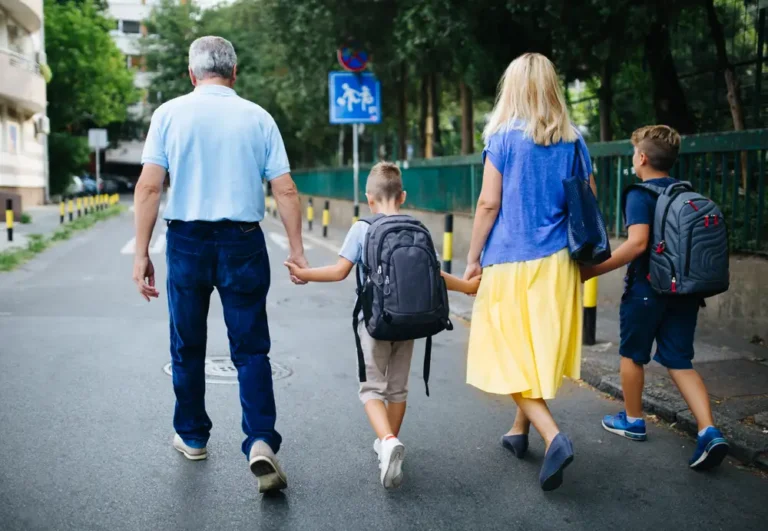Maui was criticized for not using sirens during wildfires. Does the Bay Area have a smarter approach?

Several communities opt for local alerts pushed to local phones, social media pages and front doors
Many have criticized Hawaiian officials for not sounding the island’s emergency sirens as Maui recovers from the deadliest U.S. wildfire in a century, citing fears of unintentionally sending residents towards the flames.
This disaster prompted San Francisco officials this week to restart long-overdue repairs to the city’s World War II-era siren system — an early warning service that not every county in the Bay Area provides.
Instead, across Alameda, Contra Costa, San Mateo, and Santa Clara counties, a patchwork of old-school and cutting-edge alert systems have been implemented, culminating in a jumble of sirens, loudspeakers, social media, texts, and even doorbells to warn residents of impending disaster.
According to emergency coordinators Rick Reed and Jeff Norris, by 2008, San Mateo County had installed eight sirens along its low-lying coastline that are only sounded for tsunami warnings. Rather than installing additional sirens for other hazards, the county prioritized alerting residents through bullhorns on officer patrol cars and location-based alert systems linked to cell phones and other wireless devices. Norris explained that there is a significant reason for this.
“The problem with using fixed sirens for any other evacuation notice is that they are very indiscriminate about the areas they cover and don’t really give you any direction of what is the safe route,” Norris explained. “It’s a multi-pronged approach because no single tool will reach everyone.”
Residents in cities such as Oakland, San Leandro, and Alameda in the East Bay were primed in 2003 to hear warning wails from a local network of interconnected sirens dubbed the “Corridor of Safety,” which were deployed due to the area’s increased risk of catastrophic wildfire. Alameda and San Leandro have since turned off their sirens.
Berkeley recently went a step further and began work on installing 15 battery- and solar-powered sirens capable of emitting “spoken” notifications. According to Assistant Fire Chief Keith May, the $1.97 million investment in these “long-range acoustic devices” will supplement other local emergency systems such as AC Alert, Nixle, and ZoneHaven, which broadcast digitally produced evacuation maps and real-time guides.
Although they will not be able to prevent catastrophic events like the East Bay firestorm that raged through the Oakland-Berkeley hills in 1991, killing 25 people and destroying nearly 3,000 homes, officials hope they will save lives and minimize damage because when a dangerous weather system “comes down the mountain, it’s moving fast.”
The proposed benefits of these expensive voice-powered sirens haven’t convinced leaders in San Jose and the greater South Bay to invest in that type of technology, which isn’t always compatible with existing systems. Instead, many regional emergency management leaders have increased their reliance on local alerts that can be tailored to better target specific communities in danger.
When severe weather, earthquakes, wildfires, or floods strike Santa Clara County, officials say they will not use the 38 “civil defense” sirens that have been dormant since the Cold War.
Alert SCC, a dynamic messaging system coordinated between a mix of local fire departments, law enforcement agencies, transportation officials, and others inside the county’s Emergency Operation Center, instead guides residents.
Kia Xiong, the county’s emergency risk communications officer, said staff alerts at-risk communities through a mix of mobile amplified blow horns, vehicle-mounted sirens, push notification systems, and even outreach teams assigned to homeless encampments and knocking on residents’ front doors, in addition to blasting out multilingual messages to cell phones, social media pages, emails, the county’s website, and even landlines.
According to Xiong, this more tailored approach allows for the most accurate information to be shared with the fewest steps and redundancies possible. Alert SCC is tested on a monthly basis.
“We want to make sure that when there’s an emergency or disaster in their area, we’re alerting the right community members,” Xiong said. “But we also want to make sure that we’re not notifying the wrong community to evacuate when it’s not necessary.”
Unfortunately, she said, Santa Clara County’s system relies on residents opting in for alert messages, as opposed to universal warnings such as Amber Alerts, which are broadcast to all nearby screens. Xiong explained that this is due to the fact that local emergency warnings do not meet the state’s stringent criteria for such mandatory notifications.
The lack of “opt-in” participation is a statewide issue.
According to a CalMatters report, less than 25% of adults had signed up for dozens of opt-in county emergency alert systems by 2020, even in fire-prone areas.Enrollment rates in Fresno, Alameda, and Santa Clara counties were less than 1% at the time.
On Wednesday, Xiong stated that 98,064 people have signed up for Alert SCC, which is less than 10% of the county’s own resident list.
Contra Costa County has operated its own extensive Community Warning System since the 1990s, with the ability to broadcast messages across a map of 43 sirens installed from El Cerrito to Richmond to Martinez, as well as alerts sent via TV, radio, and cellular signals.
The CWS, which local officials describe as “one of the nation’s most modern and effective-all hazard public warning systems,” can advise residents to shelter in place or evacuate, as well as provide other alerts in the face of dangers such as wildfires and hazardous explosions, especially given the area’s high concentration of non-English speakers who live near thousands of industrial plants and refineries.
As other East Bay cities installed their own systems in the early 2000s, then-CWS manager Art Botterell told the Contra Costa Times that the key to reaching the greatest number of people possible is having more than one technology at the ready, especially since those siren systems can malfunction, as happened as recently as 2016. His point of view has held up as Bay Area counties diversify their emergency warnings.
“People need confirmation before they pack up and leave their house,” Botterell said.”They require something else after a phone call, such as seeing fire or hearing a siren.”






